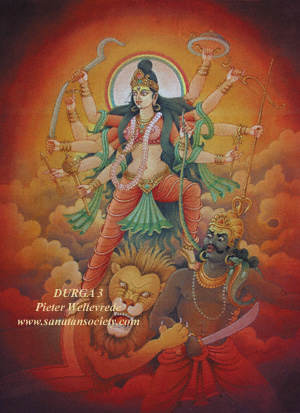
There is a tension that is pervasive in the Mahabharata that threatens the conscious mind. Nothing is direct, straightforward. You feel currents from the subconscious and the unconscious that open up the human psyche. There is a ghoulish dance between despair and faith, between war and the highest message of peace (in the Geeta), between the sublime and the very conventional, between uncontrolled rage and yoga. This is of course the dance of Kali spread out on a larger stage. As in the Ramayana, something primitive emerges out of the narration challenging us to let go of our rational minds and enter the conciouscape of mythic codes and little understood archetypes. More than the absolute truth of the text (if there is such a thing) we need to look at the meaning it creates at a personal and psychological level as the conscious mind steps out of its mundane sensibility.
- Swetha Prakash




